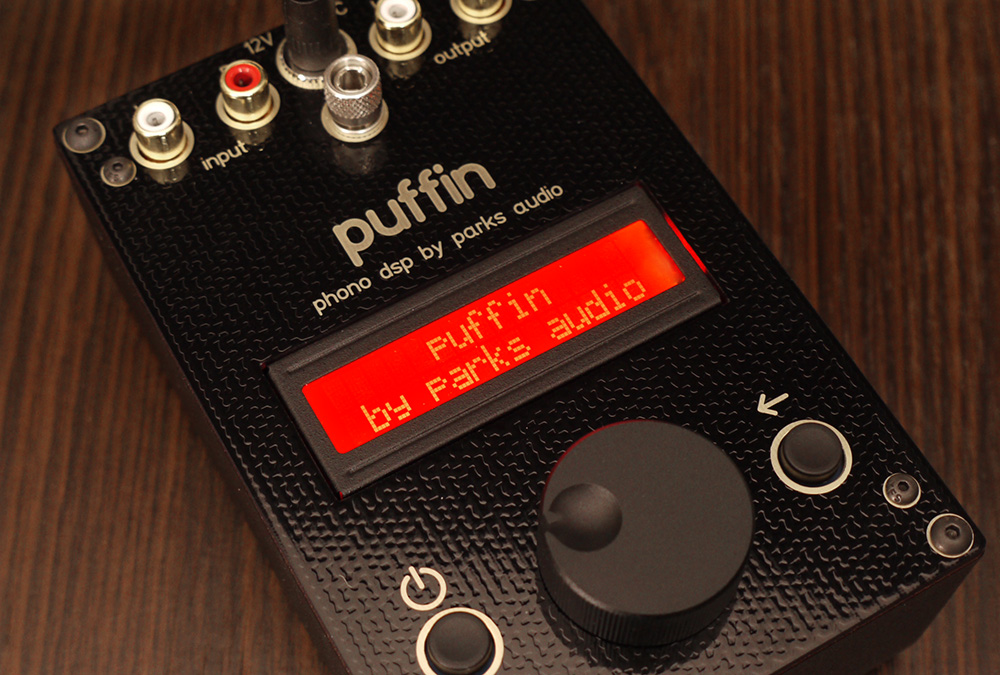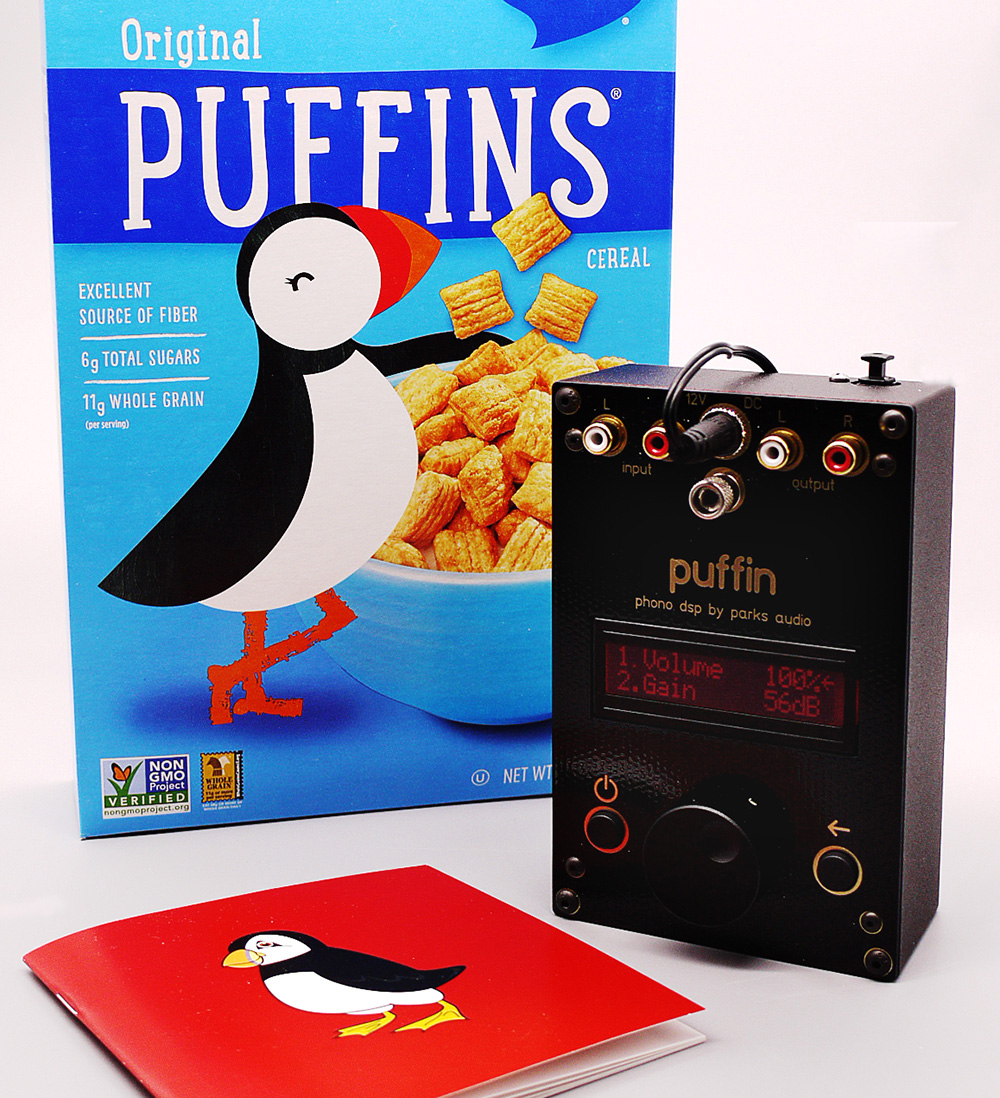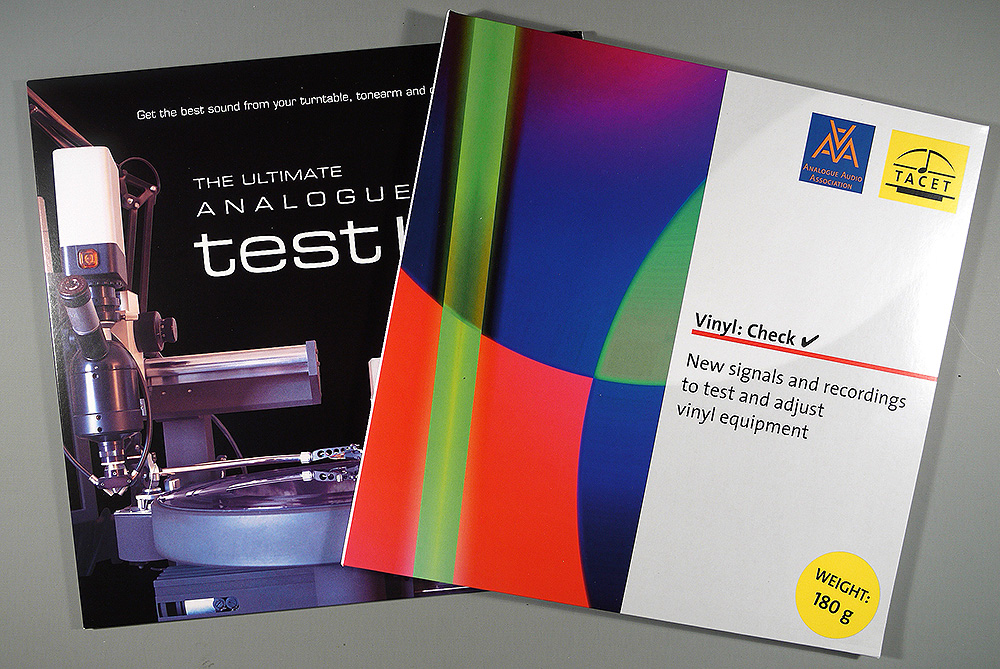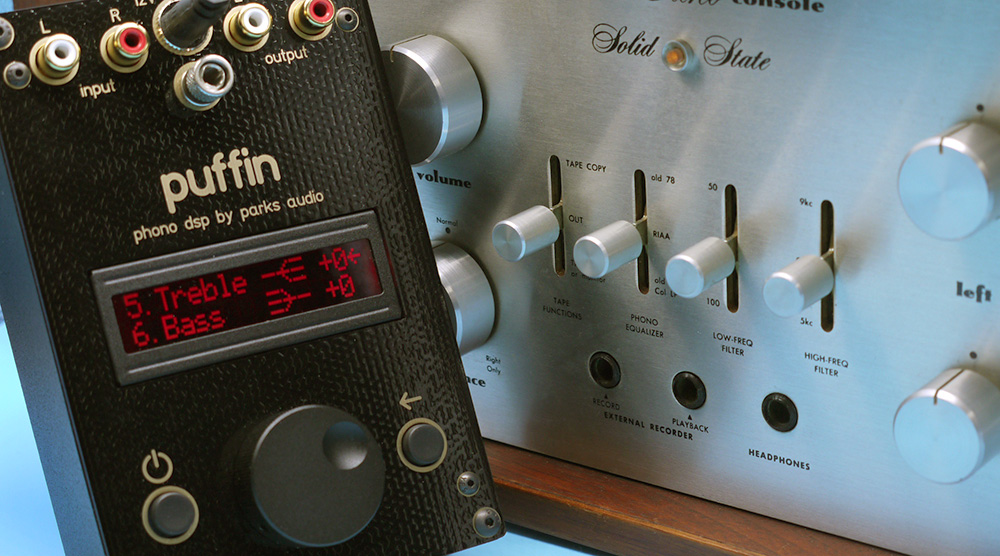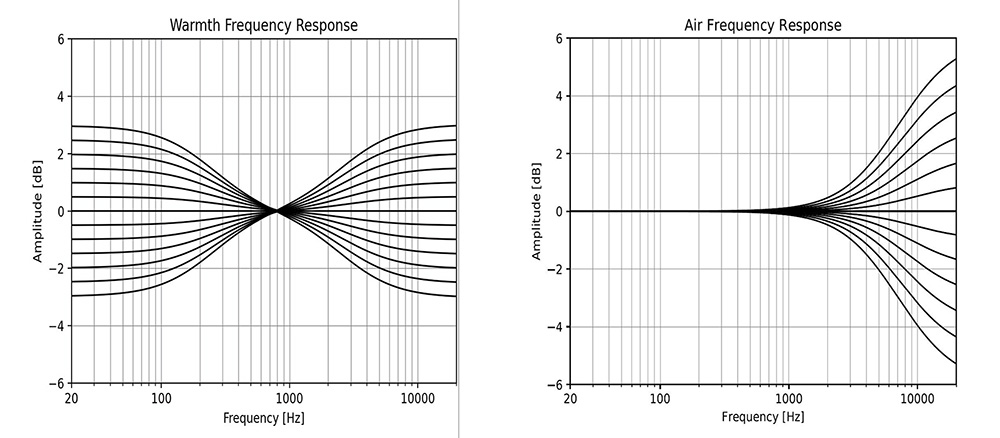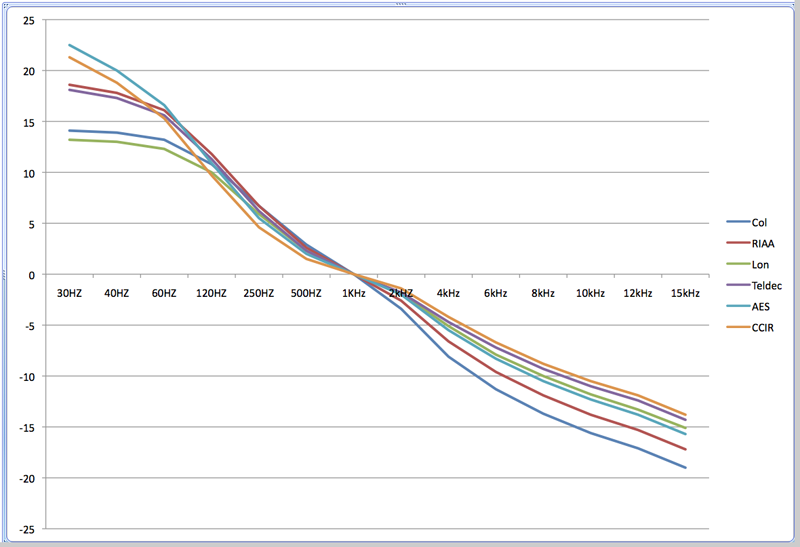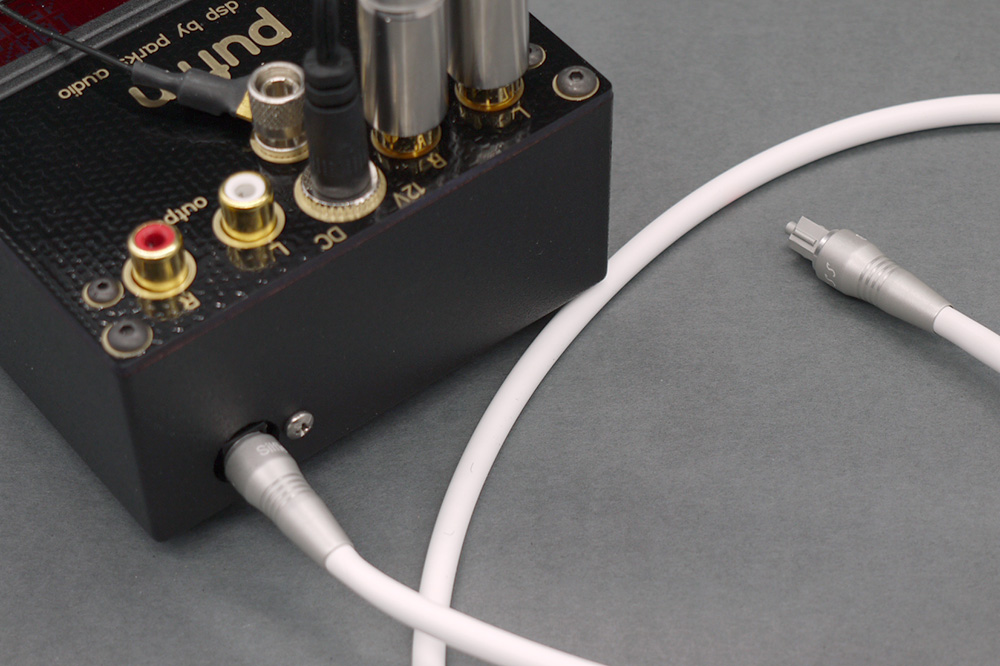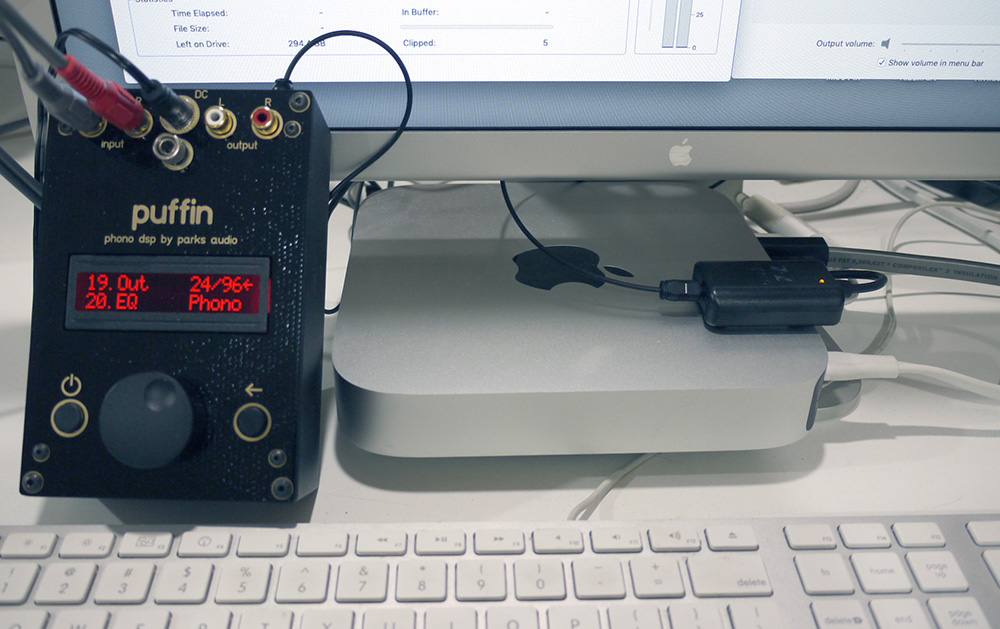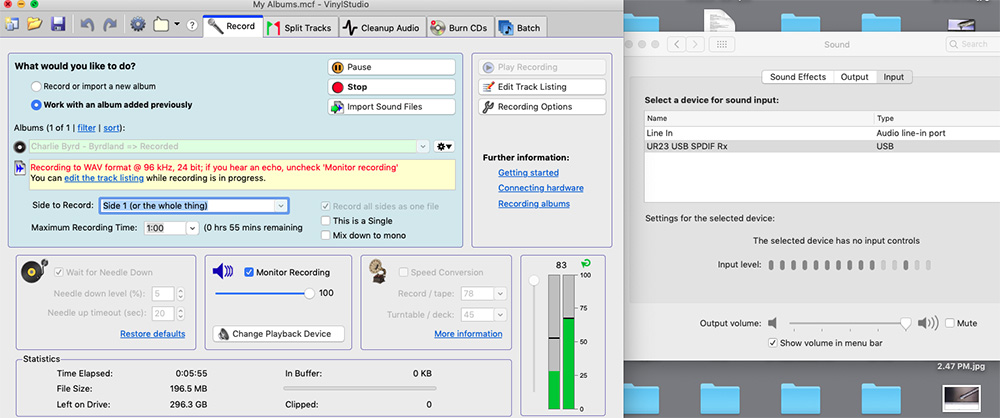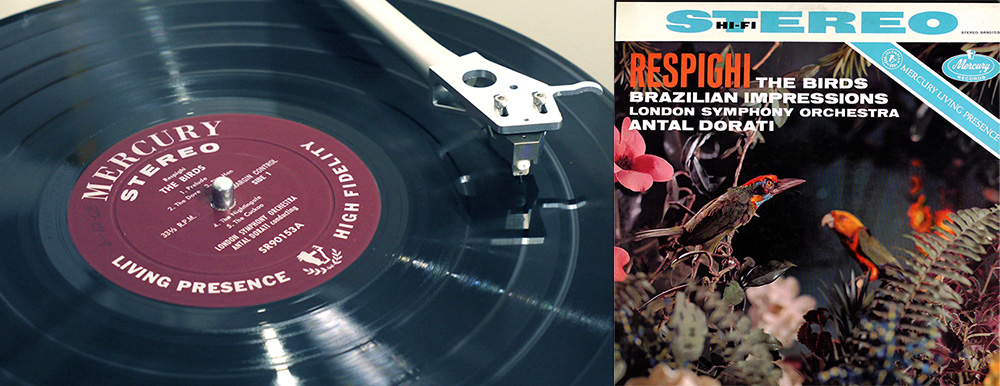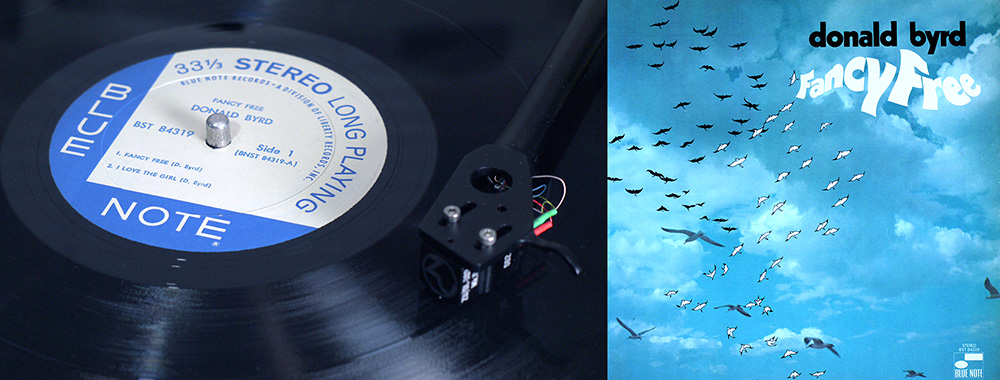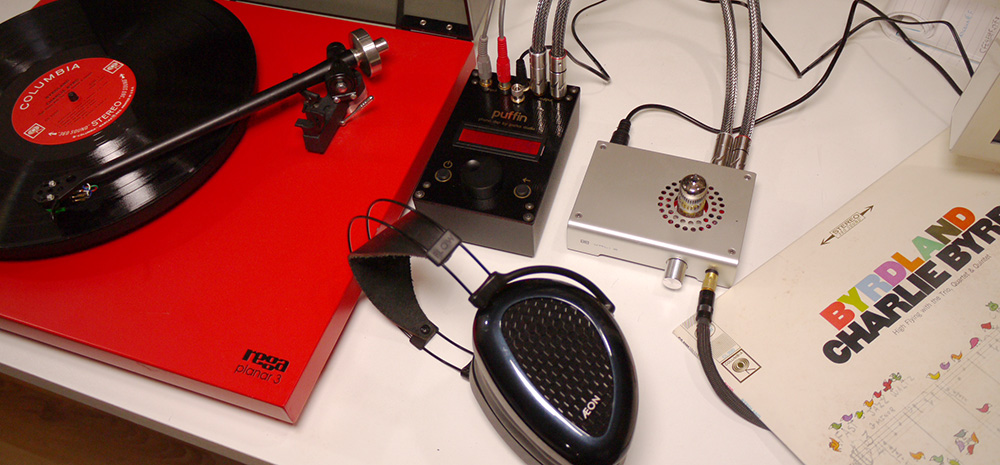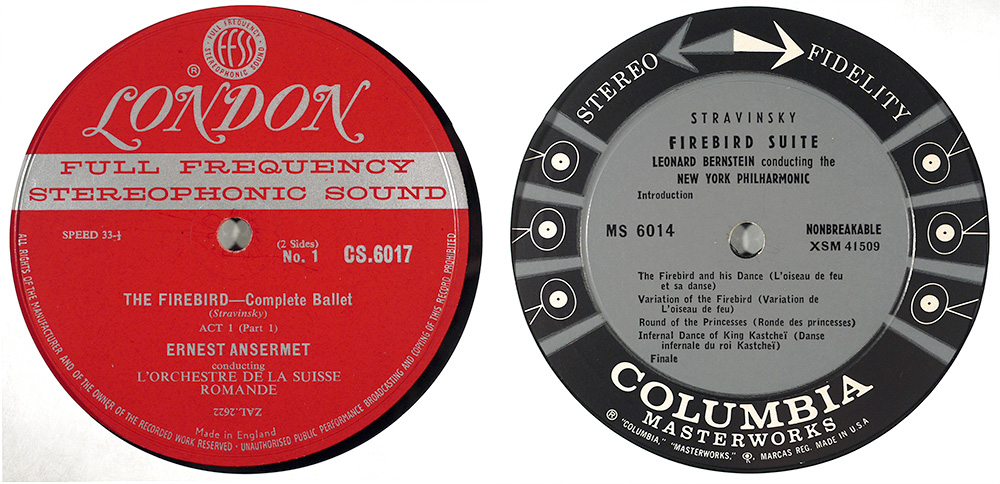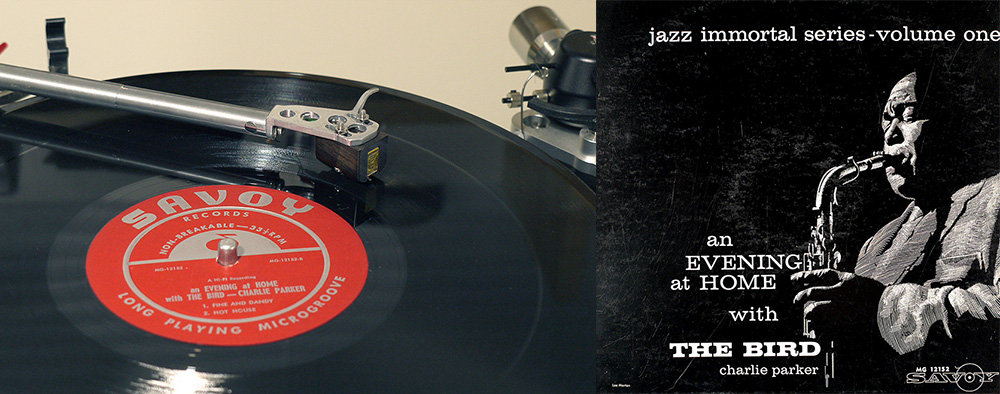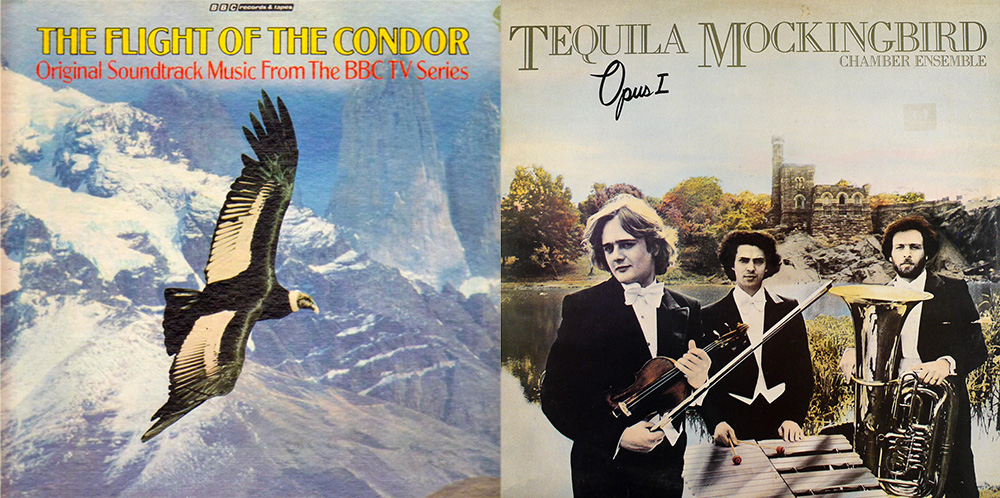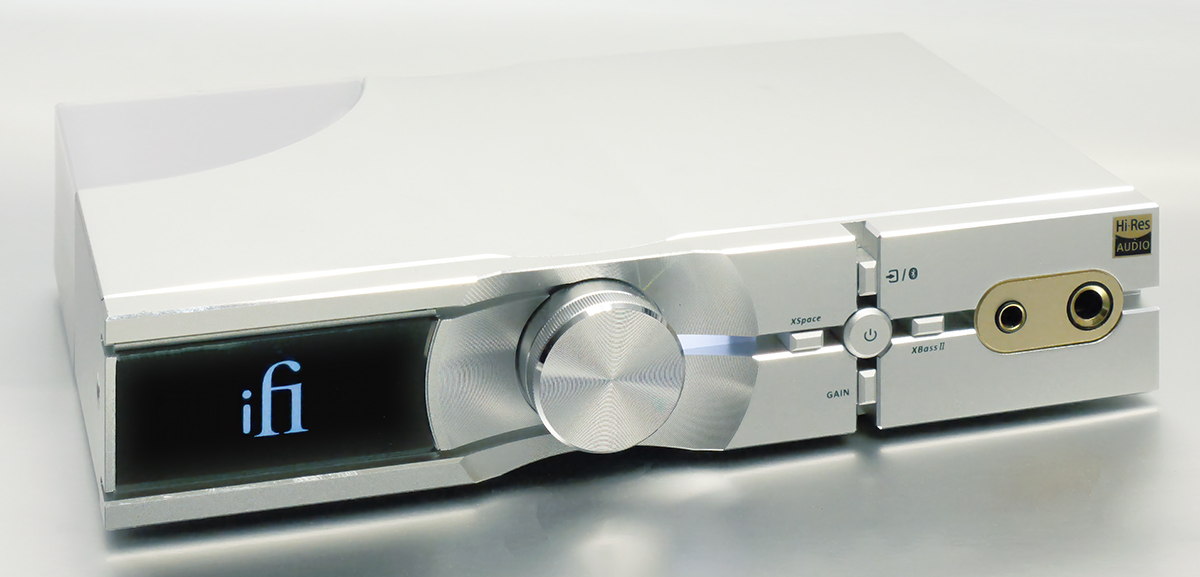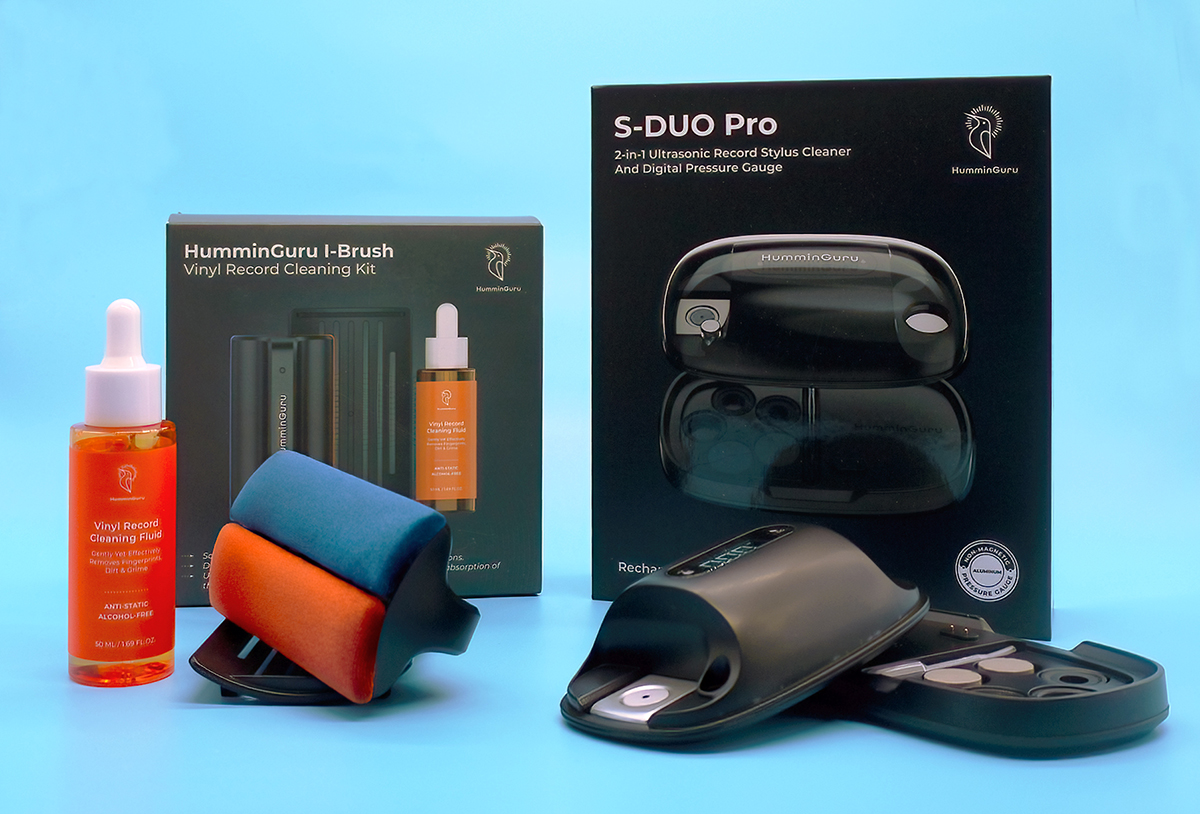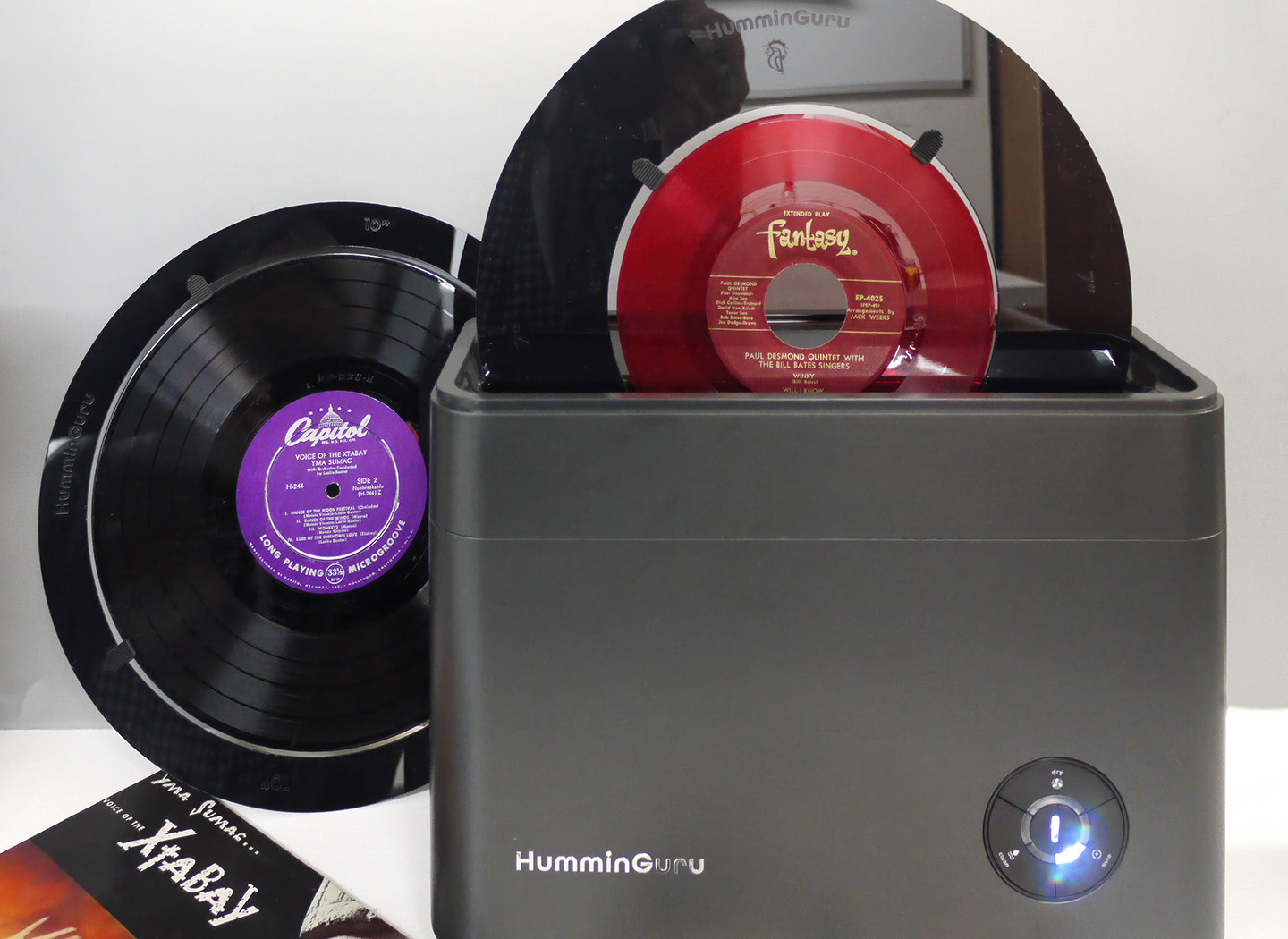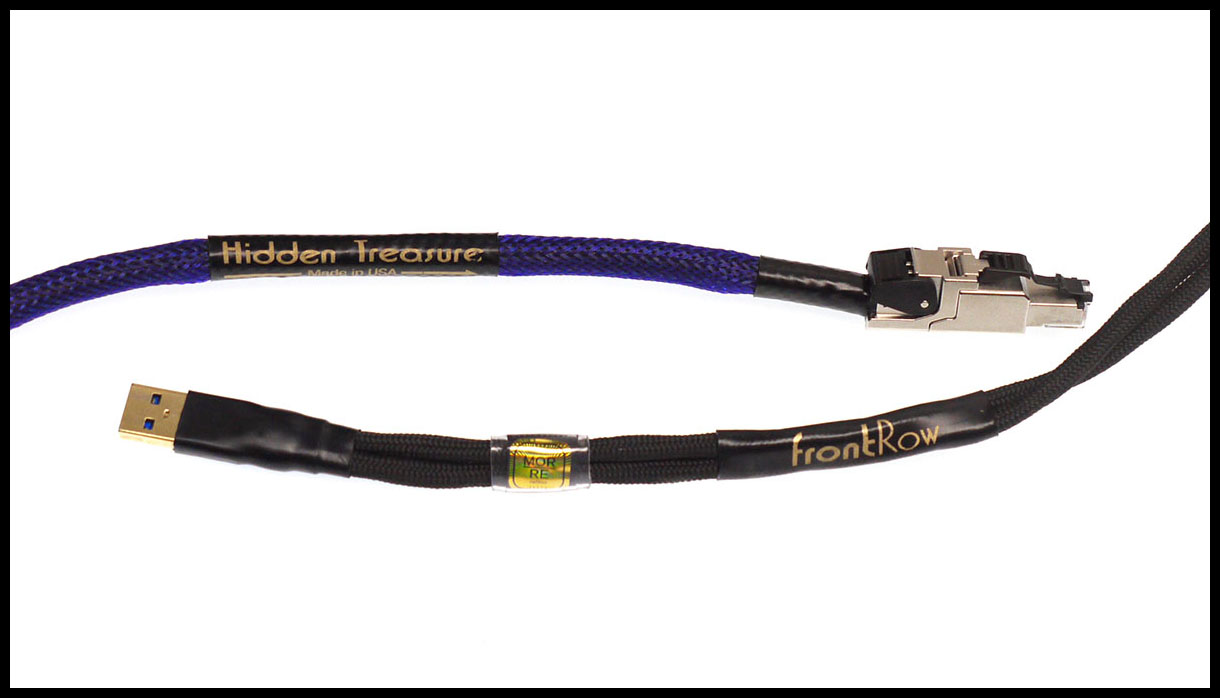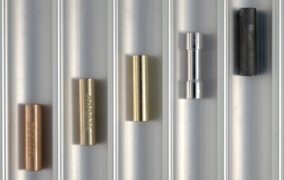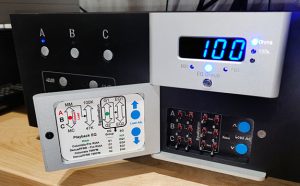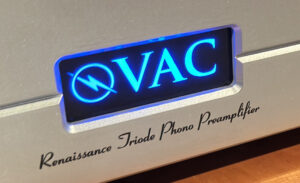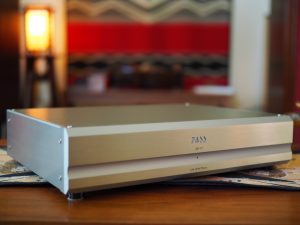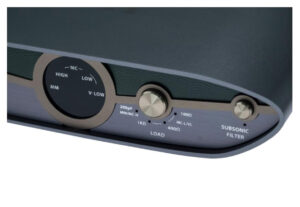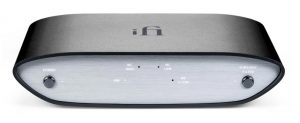So why all the Etc's? Because, while nominally an affordable MM/MC phono stage, the Parks Audio Puffin incorporates a flock of features and functions simply unavailable in phono stages commanding ten times the asking price ($489 to $639 depending on options).
OK, not at any price. But for starters, the Puffin does do the phono stage basics:
- One pair each gold-plated RCA inputs and outputs
- User selectable gain from below 40 dB for MM to 72 dB for MC, in I dB steps, thus accommodating essentially any MM or MC phono cartridge.
- Standard 47K Ohm/50pF loading for MM cartridges.
- Default MC loading of 200 Ohms (but see more below).
Etc 1 - Tech-Tool Time
From there, it gets interesting. The Puffin incorporates a suite of turntable set-up, adjustment, and playback tools:
- Azimuth adjustment
- Antiskating
- Platter Speed
- Cartridge playing hours timer
- Absolute Polarity Inversion for both channels or independently
- Stereo, Mono, Left or Right only outputs
- "Magic" gentle de-clicker impulse noise reduction
If that got your attention, you might be wondering how a small box with only two buttons and one knob could manage to do all this. Hint? The full and proper name of the device is: Puffin DSP by Parks Audio. As in digital signal processing. That's right, we're talking about a digital phono stage here. If that heresy has ruffled your feathers, you probably should cancel your Tidal subscription. Almost all mass-market LPs produced in the last several decades already have some digital DNA in the recording, mixing, and mastering process. The Puffin just brings the power of the algorithm to analog playback.
That, according to the manual, means the input signal goes to an adjustable analog gain stage, is then digitized at 24/96kHz resolution by a Texas Instruments PCM1808 ADC, the heavy lifting (i.e, DSP) is handled by an ARM Cortex M4 80MHZ with 32-bit FPU, and the processed signal is converted back to analog by a Texas Instruments PCM5102A DAC.
And what a couple chips can accomplish for analog is downright staggering. Enough so that the user interface—a simple two line LED display of multiple options and settings—can at first seem intimidating. The knob cycles through the tasks, the right button selects the user's choices (the left button is power on/off and pause). Listen, I'm an old school film photographer, and the Puffin interface reminded me of the menu control wheel and menu "set" button on my digital cameras: you quickly learn what basic camera settings work in a given situation, and pretty much ignore the "features" that you deem irrelevant (until you need them). The Puffin's analog is an "Easy" starter menu and a "Full" menu version for strutting its stuff. Plus, it ships all burned in and set up for a MM cartridge; bottom line, it's easier to install a Puffin than to make a programmable thermostat behave.
The man behind the Parks Audio Puffin is Shannon Parks of Poulsbo, Washington, who had been active in the DIY audio community for 20 years, and was selling stuff on the side like Dyna ST-70 boards before starting Parks Audio. That may explain the rather pedestrian industrial design of the device—it looks to me something like a kit-build circuit tester. The box is powder-coat cast metal, the top plastic and at about 6" x 3 3/4" x 2 3/4" it's about 1/4 the size of a box of cereal and weighs about a pound. Parks apparently names his products after birds—his first phono stage was dubbed the Budgie—in much the same spirit that John DeVore names his loudspeakers after apes, and Audioquest names their stuff after everything else.
The Puffin was first introduced in 2018, and the $489 base unit is readily available on Amazon (I discovered it because "Customers... also viewed"), but do use the website for the the upgraded units. Of course for the tech things like azimuth adjusting, you also need a good test LP or two. Shannon Parks references the the Ortofon, Analog Productions, and the Vinyl Quick from Tacet; I had the first two, and ordered the Tacet from Analog Productions.
Etc 2 - Have it your way
Audiophiles old enough to remember a world before Perfect Sound Forever will recall HiFi gear that had tone, mono, and balance controls, and multi-band equalizers were all the rage. This was partly because analog sound was never, ever perfect, folks. Over the decades those knobs and switches have virtually disappeared, leading many analog devotees (myself included) to spend serious coin on cables and and other "overpriced audiophool tone controls" to make some LPs sound better, while inevitably making others worse. I recall someone (not HP) declaring long ago in The Absolute Sound that a system could be optimized for RCA Living Stereo LPs, or Mercury Living Presence discs, but never both. They did not have to mention Blue Notes vs ECMs, or Capitol Beatles LPs vs Parlophones, but…same story.
If that resonates with your experience, you will appreciate that the Puffin has remarkable "tone control" flexibility:
- Old-school +/- 6 dB shelving tone controls, corner frequencies at 300Hz (Bass) and 3kHz (Treble), to avoid affecting the mid-range.
- Unique "warmth" control that "seesaws" overall tonality around about 800Hz. This recalls the legendary "tilt" control of early preamps from Quad (although Parks no longer uses that term). Just the thing for those DMM pressings.
- Unique "air" filter, +/- 6 dB above 8kHz, intended to eliminate MC cartridge tip resonance without resistive loading, tame other overly bright sources, and compensate for dim recordings or age-related user hearing loss
- Balance control in 2 dB steps, plus Fine Balance control (within .1 dB) to correct cartridge or other system imbalance
- BassBoost option to add an adaptive boost relative to the bass setting below 100Hz (useful for small speakers with limited bass output).
- Lo filter adjustable from 5Hz to 400Hz to deal with tonearm resonance, turntable rumble, 50/60Hz hum on recordings, room modes, etc.
- Unique "DeRumble" 12 dB/octave filter that sums stereo bass to mono below 200Hz, eliminating unwanted vertical stylus movement in the playback environment caused by tonearm resonance, bearing rumble, record warps, external vibration, etc., which cause excessive woofer excursion and stress power amps. This complements the mono bass already used on stereo LPs for similar reasons.
- Hi filter to attenuate high frequencies, selectable from 5kHz to 48kHz, to attenuate surface noise from LPs and 78s, tape hiss, CD filter ringing, etc.
- Unique "Room EQ" setting, a narrow 6 dB cut filter variable through the range between 200Hz and 400Hz to offset congestion from room mode summing and reflections.
- Unique "fx" options to output pink noise, add 2nd harmonic distortion to mimic 300B tube sound, or mimic 3rd harmonic distortion of vintage tape machines
Conclusion: with the Puffin, one can do an amazing job of "remastering" recordings to taste (and finally resolve the RCA vs Mercury conundrum)..
Etc 3 - EQ to the Rescue
If you only play post-1960 recordings, you can skip this part.
I got into High End audio through the back door, as a long-time record collector. I still want proper playback of my many mono and early stereo LPs, and even 78s, not just $50 audiophile reissues. Vinyl playback requires "(un)equalization" by definition, as the information engraved in the grooves is "pre-equalized" at the factory: bass is cut and treble boosted to mitigate the physical limitations of vinyl. As this was standard practice in the 78 era, in the early days of the LP recording companies (like Columbia, RCA, and UK Decca) and organizations like the Audio Engineering Society (AES) and the National Association of Broadcaster (NAB) devised different mastering EQs, and HiFi gear had to incorporate the appropriate reciprocal playback EQs. Although Columbia invented the LP in 1948, the "standard" RIAA EQ curve of 1954 was adapted from RCA's version, and the rest of the world gradually agreed to play by the RIAA rules. Part of the fun about early analog is how different the EQs can sound, especially as many labels used more than one EQ. You can read my thoughts on pre-RIAA EQ in a review of the original iFi iPhono HERE, but let me re-use a visual from that piece:
I've been using that original iPhono ever since to play mono and early stereo LPs because it has early Columbia and Decca as well as RIAA EQs; the current (third) version was reviewed HERE and HERE. The price has increased to $999.
Now comes the Puffin, providing even more control over playback EQ:
- Standard RIAA EQ for most (but not all) post-1954 LPs
- Pre-RIAA EQ preset curves for AES, Columbia, and NAB US recordings.
- European standard Decca/EMI/European early LP EQ.
- Preset EQ curves for US, UK, and European 78 RPM recordings.
- Fully user adjustable settings for high frequency roll-off, bass turnover, and bass shelf for user created non-standard EQs, this of particular interest to 78 RPM addicts.
- It can even measure cartridge frequency response from test record sweep tones to confirm EQ accuracy.
I have to stress that analog playback has never been a "straight wire with gain" concept. Even in our "universal" RIAA era, any decent LP playback setup demonstrates that different labels, mastering and pressing variables, and countries of origin produce recordings that sound different. Left to the listener and their wallet are countless choices that influence the "sound" before the signal even reaches the phono stage: cartridge design, quality, and stylus profile, tonearm design, VTF/VTA/SRA, turntable set-up and isolation, platter mats, tonearm cables, etc., plus everything else involved in getting that sound on down to your speakers or headphones.
Etc 4 - Connectivity
Which brings me to the good old in-and-out fun parts. Although nominally a phono stage, even a base Puffin ($489) can be used as a preamp in a phono only system, or switched so the input RCAs are at line level for use with CD/DVD players, tape decks, or other devices—even other phono stages. But, for a few dollars more, you can have digital as well as analog outputs: S/PDIF coaxial for $589, or Toslink optical for $639, your choice. But why would anyone even want that? Well, look around—you probably already have a fancy DAC costing more than a Puffin sitting right over there; the digital outputs allow you to play your old-school analog through your high-res digital rig at 24/48kHz or 24/96kHz, and the Puffin will likely sound even better than via the built-in chipset.
I went with the Toslink option, partly because my S/PDIF cables are only .5m, and longer Toslinks are cheap—I used a 3' Lifatec to connect the Puffin to my Chord Qutest DAC, itself tarted up with an UpTone Audio LPS 1.2 Ultra-capacitor linear power supply and an Audio Sensibility Ohno copper DC cable. Yup, the Qutest recognized the 24/96kHz signal, and the already good Puffin sound quality markedly improved; I did most of my subsequent listening through the Qutest.
The Puffin actually does come with a USB cable—but it doesn't do USB out, only S/PDIF (the USB cable is for firmware updates—you just remove the top plate with the supplied Allen wrench).
The Puffin is supplied with a fairly generic switched mode 12v DC power supply with a ferrite bead, powered by a replaceable non-polarized C7 plug cable. Shannon Parks worked as a RF technician before starting his audio business, and is obsessed with keeping the noise floor as low as possible. He recommends plugging the Puffin directly into the wall socket, not a surge protected power strip or power conditioner shared by other components. However, in my system, the results were definitely superior running the Puffin through the iFi Power Station I use for source components (and which isolates the outlets from each other).
Linear power supplies are all the rage with digital gear, so of course I tried running the Puffin with the UpTone LPS 1.2 reset to 12v. Yup, sound quality again improved—I just wish I had a spare LPS for both the Qutest and the Puffin..
Etc 5 - On to the Archive
Lots of folks have spent the pandemic transferring their CDs to computer files as streaming overtakes physical media. As with any phono stage, one can also digitize vinyl to CD quality 16/44kHz or better using the Puffin's analog outputs and an inexpensive outboard sound card or pro-audio interface. John Marks detailed his process back in 2017 (HERE) and (HERE).
But as the Puffin DSP runs at 24/96kHz, all it needs to record high-res files is a S/PDIF to USB interface; there are several in the pro-audio sector of course, but the least expensive device I've found is the $25 matchbook-sized Hifime Audio UR23 S/PDIF Optical to USB converter, also rated to 24/96kHz (HERE). It uses the 3.5mm version Toslink, but includes an adapter for the larger standard AV cables like the Lifatec. From China of course, but promptly shipped from their US warehouse in Oregon.
There are many choices for recording software. You can download full-featured Audacity (HERE) for free, but VinylStudio (HERE) for $29.95 is specifically intended for archiving LPs, and has a friendlier user interface. The UR23 works fine with both, just configure everything to 24/96kHz, and use the Gain control on the Puffin to set the recording level. I tend to use the Puffin tone and EQ controls to adjust sound to taste before recording. I don't bother with the "Magic" click and pop suppression option for ordinary listening, but do engage it when dubbing to avoid digital clipping.
The Puffin in Practice
OK, but how does it sound? That gets complicated, and not just because its raison d être is the many options to change the sound. I run a modified Nottingham Analogue Spacedeck with two arms: to the left an Origin Live Illustrious with a Miyajima Zero mono cartridge, and on the right something of a rarity: an Audio Origami Uni-Arm, in fact the selfsame unipivot unit Art Dudley reviewed for Stereophile—I snagged it from the distributor before they sent it back to the UK. When I heard it was being discontinued I ordered a second wand while I could. The unipivot's base ships with a captive good quality Van Damme tonearm cable, but the wand connects to the base with standard DIN plugs, so I can strap other tonearm cables to the base with some elastic, and switch them in 10 seconds. I'm currently running a Lyra Kleos in one wand, and a Zu/Denon 103 in the other.
I haven't kept up with the current crop of <$1000 phono stages (or the >$10K ones either), but Santa recently supplanted my AQVOX 2 CI with a Sutherland Little LOCO. Both are current mode amplifiers (which obviates the need for messing around with loading resistors) and are for MC cartridges only. My iPhono is two generations old, so unfair as it is, with both set for RIAA, MC loading at 200 Ohms (Puffin)/250 Ohms (iFi), differences were quite apparent. The iFi is smoother and sweeter (it featured a "tube sound" circuit) and has worked well with the Zu/Denon and the Miyajima Zero for less than pristine early LPs. Reviews confirm the current iPhono is substantially improved, but the Puffin is more dynamic and dimensional, and instrumental/vocal textures have more "character" than with my original iFi.
Also unfair is a comparison with my "reference" setup: the $3695 Lyra Kleos mounted with the $400 AudioMachina V8 headshell damper to the Uni-Arm and connected to the $3800 Little LOCO via an Audio Sensibility Statement Silver phono cable. On a well-recorded LP the sound is sublime in terms of resolution, staging, transparency, and the "you are there" sense of real musicians performing in real space—especially with the Class A solid-state Valvet 2se amp. Using the same rig and cables, the $639 Puffin is admittedly outclassed by the Little LOCO. Part of this may just be my preference for current mode vs. "normal" voltage mode amplification, as the Puffin sounds quite good in absolute terms—and frankly is preferable when too-bright pressings need some “Warmth/Air” adjustments. And check Etc 4 for more on sound quality.
The Zu/Denon has an internal impedance of around 40 Ohms—it's not an ideal partner to any current mode phono stage, which want as low a value as possible (the Kleos is at 5.4 Ohms); I've used it mostly with the iFi. The conical stylus resolves less detail than the Ogura line contact on the Kleos, and is more forgiving with problem pressings. My listening room is in the basement, and as winter's chill sets in, I listen mostly with my Coincident Dynamo 34 SE MK II tube amp, a majorly fun heat source. The Denon 103 is a long-time favorite of tube-aholics; connecting the Zu rebuild through the lively little Puffin changes the listening dynamic to a "they are here" presentation that really gets the juices flowing and puts a grin on your face. The sound is full-bodied, and spacious in a way my old iFi can't match.
Why would I want both? I taught in art colleges for years, so let me paraphrase Nietzsche for a moment. The Lyra/LOCO combo is echt Apollonian (representing harmony, clarity, purity, and individuation); the Denon/Puffin pairing better channels brother Dionysius (emotion, ecstasy, intoxication, and just a bit of chaos—he was after all the God of wine and dance). Old Friedrich felt the tension of the two mind sets/impulses was the basis of art. I am most fortunate to have the option to match music to mood.
Before putting the Puffin into regular play I used its azimuth and anti-skate set-up functions with the recommended test records. A bit fiddly, but even minor changes were definite improvements, especially with the fussy line contact Kleos. As my Spatial Audio loudspeakers roll off quickly below 40Hz, I reset the Lo filter to 35Hz and the Hi filter at 15kHz to minimize stressing my low power amps.
The Puffin is small and light, but with its horizontal LED display and "DIY" industrial design might be an awkward fit in some racks. It is ideal for a desktop setup, and I have also used it in my office/record cleaning operation to check condition using a Rega Planar 3 and Schiit Vali 2 headphone amp or the PS Audio Sprout and Amphion monitors. Did I forget to mention that the Puffin's "Magic" tic suppressor will also actually grade your vinyl by counting tics?
My first Puffin project with the Kleos was a Firebird face-off, using the Puffin's EQ options to determine the optimum settings for Ansermet (early London FFSS) and Bernstein (Columbia 6-Eye). The world's leading authority may disagree, but EQ is surprisingly worth checking on early releases, these being numbers 17 and 14 respectively. The Kleos/Puffin also easily revealed differences between original UK Decca and late Phillips pressings of Vaughan Williams A Lark Ascending on Argo, letting the Puffin optimize Iona Brown's violin tone with minor "warmth" and "air" adjustments.
Similarly, the Miyajima Zero/Origin Live combo let the Puffin get the most out of collectible mono LPs, like Ida Haendel's Beethoven Violin Concerto on RCA's pre-RIAA Bluebird label (a UK recording), Dorati's 1954 (pre-RIAA) Swan Lake on Mercury, and Charlie Parker's An Evening at Home with the Bird on Savoy.
Switching to the Zu/Denon, I flipped through some shelves of folk, rock, and jazz stereo LPs to come up with a proper Puffin playlist. Jennifer Warnes' "Bird on a Wire" is a de rigueur female vocal audiophile test of course, with the Puffin providing excellent timbre and texture, and well-defined instrumental placement. Very different female vocals from Joni Mitchell's Song for a Seagull and Carolyn Hester's High Flying Bird (featuring "Baltimore Oriole") were well served, but Mike Heron and Robin Williamson's Incredible String Band vocalisms just haven't aged that well. Moving along into the rock era, David LaFlamme's "White Bird" and Paul's "Blackbird" made a nice segue to the Eagles and the Byrds for some country rock. More cosmopolitan were acquired tastes like the Penguin Café Orchestra and the Manhattan Transfer—and not just "A Nightingale Sang in Berkeley Square," the vocal quartet's version of "Birdland" meant cranking up Weather Report's definitive power jazz version. The Zu/Denon/Puffin combo loves articulate bass, so naturally out came some choice Steve Swallow and Gary Peacock. While I have all those familiar boomer titles, as a reviewer I'm obligated to include at least one TAS List LP (like The Flight of the Condor) and one true rara avis, everyone's favorite violin/marimba/tuba ensemble, Tequila Mockingbird.
Sure, I had some fun writing this review, but I actually can't recall having more fun reviewing any audio component than I had using the Puffin in its various configurations. I just noticed it ranked 51 on Amazon's phono preamplifier list, and it seems both well-priced for analog newbies (especially of the desktop persuasion) and ideal for folks reclaiming their old records for the streaming age. It's also an obvious pick for record collectors and 78 enthusiasts. For the audiophile, the turntable tools alone might justify the purchase, while the option of using a high-end outboard DAC way ups the price/performance ratio. For myself, it has become the ideal second phono stage. Most highly recommended!
Puffin Phono DSP
Retail: $489-$639
Parks Audio
http://parksaudiollc.com/index.html




